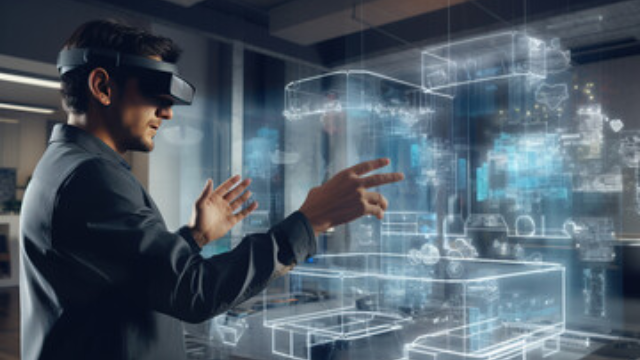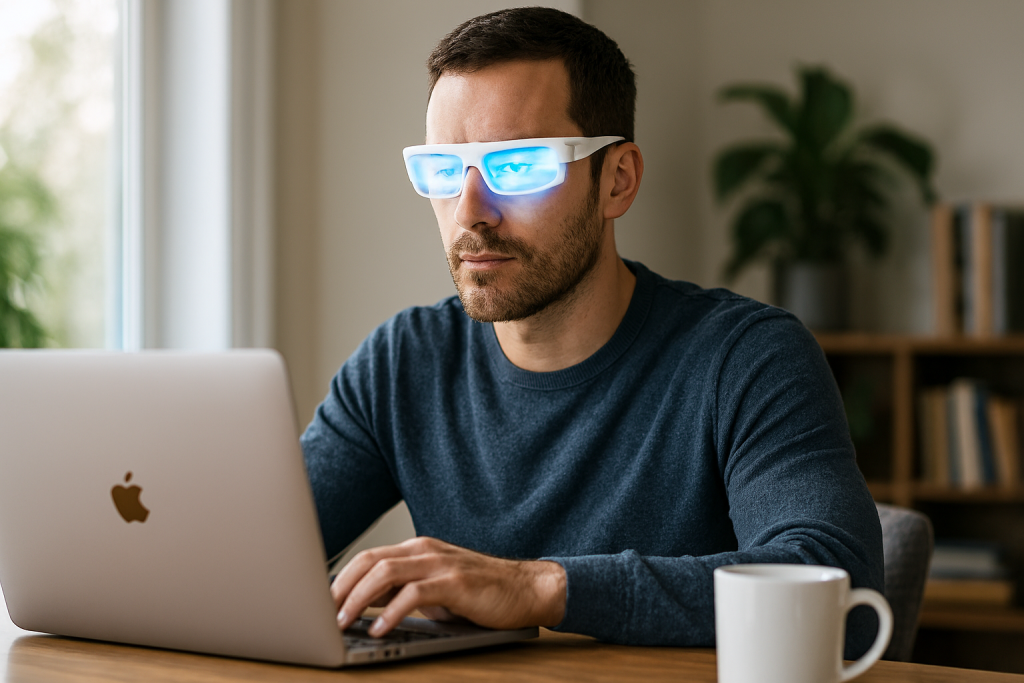Are you curious about the potential downsides of augmented reality? In this article, we will explore the negative effects that this technology can have on your physical and psychological well-being. From distorting your perception of reality to increasing the risk of accidents, augmented reality is not without its drawbacks. Additionally, we will delve into how it can lead to social isolation, dependency, and privacy concerns. Join us as we uncover the ethical considerations surrounding this innovative yet potentially problematic technology.
Physical Health Concerns
If you spend excessive amounts of time engaged in augmented reality experiences, you may be at risk for physical health concerns due to the sedentary nature of these activities. One of the main ergonomic concerns associated with augmented reality is the potential for musculoskeletal issues. When using augmented reality devices, such as headsets or handheld devices, individuals often adopt awkward or uncomfortable postures for extended periods of time. This can lead to strain on the neck, shoulders, and back, resulting in pain and discomfort.
Another physical health concern related to augmented reality is eye strain. Augmented reality experiences often require individuals to focus their vision on virtual objects or information displayed in a digital overlay. This constant focusing can cause eye fatigue and strain, leading to symptoms such as dry eyes, blurred vision, and headaches.
To mitigate these physical health concerns, it is important to practice good ergonomics and take regular breaks from augmented reality activities. Ensuring that your posture is properly aligned and that you are using the correct equipment can help prevent musculoskeletal issues. Additionally, following the 20-20-20 rule, which entails looking at an object 20 feet away for 20 seconds every 20 minutes, can help alleviate eye strain.
Psychological Impact
The psychological impact of augmented reality can have significant implications on individuals’ mental well-being and cognitive functioning. When it comes to cognitive function, the use of augmented reality can both enhance and impair it. On one hand, augmented reality can provide users with new opportunities for learning and problem-solving, as they engage in interactive experiences that stimulate their brains. On the other hand, excessive use of augmented reality can lead to cognitive overload, which can negatively affect individuals’ ability to process information and make decisions.
Another concern related to the psychological impact of augmented reality is the addiction potential it presents. Augmented reality applications often offer immersive and captivating experiences that can be highly addictive. The constant desire to engage in these experiences can lead to neglect of real-life responsibilities and relationships, ultimately affecting individuals’ mental well-being.
Furthermore, the blurring of boundaries between the virtual and real world in augmented reality can create confusion and disorientation, leading to psychological distress. This can be particularly problematic for individuals who already struggle with mental health issues such as anxiety or depression.
Distortion of Reality Perception
Distortion of reality perception in augmented reality can lead to cognitive dissonance and disorientation. Augmented reality (AR) overlays computer-generated information onto the real world, creating an immersive and interactive experience. However, this blending of virtual and real elements can sometimes blur the line between what is real and what is not, impacting our perception of reality.
One negative effect of this distortion is the potential compromise in the reliability of information. AR applications rely heavily on accurate information in order to provide users with relevant and useful virtual content. However, due to the inherent limitations of AR technology, such as environmental factors or technical glitches, the reliability of the information presented may be compromised. This can lead to confusion or even misinformation, affecting users’ ability to make informed decisions based on the AR content they perceive.
Another negative consequence of distorted reality perception in augmented reality is sensory overload. AR experiences often involve a combination of visual, auditory, and sometimes haptic stimuli, overwhelming our senses. The constant bombardment of information can result in cognitive overload, making it difficult for users to process and retain the virtual content effectively. This sensory overload can lead to feelings of disorientation and mental fatigue, hindering the overall user experience.
Increased Risk of Accidents
Be aware of the increased risk of accidents in augmented reality due to the potential distractions and disorientation caused by the blending of virtual and real elements. While augmented reality (AR) technology offers exciting possibilities, it also poses certain dangers, particularly when it comes to safety on the road or in other potentially hazardous situations. Here are four key reasons why increased risk of accidents is a concern in augmented reality:
- Distracted driving: AR applications, such as heads-up displays or navigation systems, can divert your attention away from the road, leading to a higher risk of accidents. Engaging with virtual content while operating a vehicle can be extremely dangerous and significantly increase the likelihood of collisions.
- Reduced situational awareness: AR can impair your ability to perceive and understand the real-world environment around you. By overlaying virtual elements onto reality, AR may hinder your ability to accurately assess your surroundings, increasing the risk of accidents.
- Cognitive overload: Multitasking between virtual and real elements in AR can overwhelm your cognitive resources. Juggling between processing virtual information and real-world stimuli can lead to cognitive overload, impairing your ability to make quick and accurate decisions, further increasing the risk of accidents.
- Disorientation and spatial distortion: AR can create a sense of disorientation and spatial distortion, making it challenging to distinguish between virtual and real objects. This confusion can lead to accidents, especially in situations where precise spatial awareness is crucial, such as construction sites or crowded urban areas.
Social Isolation and Dependency
When engaging with augmented reality, you may find yourself spending less time interacting face-to-face with others, as the virtual world becomes more enticing. This can lead to decreased social interactions and a sense of isolation. Additionally, the increased screen time required for augmented reality experiences can contribute to a dependency on technology, further distancing individuals from real-life social experiences. As a result, these factors can weaken social skills and hinder the development of meaningful relationships.
Decreased Face-To-Face Interactions
You may experience a decline in face-to-face interactions due to augmented reality, leading to social isolation and dependency. Here are four reasons why this can happen:
- Preoccupation with technology: Augmented reality can be captivating, making it easy to get lost in the virtual world and neglect real-life social interactions.
- Loss of social skills: Spending more time interacting with augmented reality can result in decreased socialization skills, making it harder to engage in face-to-face conversations.
- Dependency on technology: Relying heavily on augmented reality for social interactions can lead to a dependency on the technology, making it difficult to connect with others without it.
- Reduced empathy and emotional connection: Face-to-face interactions allow for non-verbal cues and emotional connection, which can be lost in the virtual world of augmented reality.
It is important to find a balance between augmented reality and real-life social interactions to prevent social isolation and maintain healthy relationships.
Increased Screen Time
As you spend more time engaging with augmented reality, your screen time increases, leading to potential social isolation and dependency. The immersive nature of augmented reality requires you to constantly look at a screen, which can contribute to a sedentary lifestyle and reduce face-to-face interactions. This increased screen time can lead to social isolation, as you may prioritize virtual interactions over real-life interactions. Moreover, excessive screen time can also result in dependency on augmented reality, as you may become reliant on the technology for entertainment or socialization. Additionally, prolonged screen time can cause eye strain, leading to discomfort and potential long-term vision problems. It is important to be mindful of the amount of time you spend engaging with augmented reality to maintain a healthy balance between virtual and real-world interactions.
| Negative Effects of Increased Screen Time |
|———————————–|————————————-|
| Sedentary Lifestyle | Reduced physical activity |
| Social Isolation | Less face-to-face interactions |
| Dependency on Technology | Reliance on augmented reality |
| Eye Strain | Discomfort and potential vision problems |
| Reduced Real-Life Interactions | Prioritizing virtual interactions |
Weakening Social Skills
Excessive engagement with augmented reality can lead to a weakening of social skills, as it promotes social isolation and dependency on virtual interactions. This can have negative impacts on empathy and communication skills. Here are four ways in which augmented reality can weaken social skills:
- Reduced face-to-face interactions: Spending too much time in augmented reality can limit real-life social interactions, leading to a decline in the ability to read social cues and connect with others on a deeper level.
- Decreased empathy: Virtual interactions lack the emotional nuances present in face-to-face communication, making it harder to develop empathy and understand others’ emotions.
- Dependency on virtual connections: Relying heavily on virtual interactions can create a dependency on technology for socializing, making it challenging to establish and maintain meaningful relationships in the real world.
- Impaired communication skills: The reliance on virtual interactions can hinder the development of effective communication skills, such as non-verbal cues, active listening, and empathy, which are crucial for building strong interpersonal connections.
It is important to strike a balance between augmented reality experiences and real-life social interactions to maintain healthy social skills and relationships.
Privacy and Security Risks
When it comes to privacy and security risks in augmented reality (AR), there are several concerns to consider. Data breaches and identity theft can occur when personal information is stored or transmitted through AR devices or applications. Additionally, the use of AR can lead to increased surveillance, as it enables the collection of user data and behavior patterns. Lastly, users may feel a lack of control over their personal information, as AR technologies often require access to sensitive data. These risks highlight the need for robust privacy and security measures in the development and use of AR.
Data Breaches, Identity Theft
You should regularly be wary of the privacy and security risks that come with augmented reality, as data breaches and identity theft can occur. Here are some reasons why you should be cautious:
- Data breaches: Augmented reality relies heavily on collecting and processing user data. This data can be vulnerable to hacking or unauthorized access, leading to potential data breaches.
- Identity theft: With augmented reality, personal information such as location, images, and even biometric data can be exposed. This can make individuals more susceptible to identity theft and fraud.
- Improving education: While augmented reality has the potential to enhance education by providing interactive and immersive experiences, it also poses risks. Educational platforms utilizing augmented reality may collect sensitive student data, increasing the chances of data breaches and identity theft.
- Enhancing gaming experience: Augmented reality games often require access to personal data, such as location and camera permissions. This can leave users vulnerable to data breaches and potential identity theft.
It is crucial to be mindful of these risks and take necessary precautions when engaging with augmented reality applications to protect your privacy and security.
Surveillance, Lack of Control
To better understand the negative effects of augmented reality, it is important to recognize the concerning issue of surveillance and the lack of control over privacy and security risks. With the increasing use of augmented reality technology, there are growing surveillance concerns and potential loss of autonomy for individuals.
| Surveillance Concerns | Loss of Autonomy |
|---|---|
| Constant monitoring of user activities | Reduced control over personal information |
| Invasion of privacy | Potential for unauthorized access to personal data |
| Tracking of location and behavior | Increased vulnerability to hacking and cyber attacks |
| Collection of personal data without consent | Potential misuse of collected data |
| Lack of transparency in data handling | Diminished ability to maintain anonymity |
The integration of augmented reality into everyday life raises significant concerns regarding surveillance and the potential loss of control over privacy and security. Users may find themselves under constant monitoring, with personal information being collected, tracked, and potentially misused without their consent. This lack of transparency in data handling leaves individuals vulnerable to unauthorized access and cyber attacks. Moreover, the collection of personal data without proper consent diminishes the ability to maintain anonymity and control over one’s own information. These surveillance concerns highlight the need for stronger privacy regulations and increased awareness of the risks associated with augmented reality technology.
Ethical Considerations
One major ethical consideration associated with augmented reality is the potential invasion of privacy. As this technology becomes more prevalent, concerns arise about the collection and use of personal data. Here are four ethical implications to consider:
- Data security: With augmented reality, personal data is constantly being collected and analyzed. This raises concerns about how this data is stored, protected, and used by companies. There is a risk of unauthorized access or misuse of this data, which could lead to identity theft or other privacy breaches.
- Surveillance: Augmented reality devices have the potential to record and monitor individuals without their knowledge or consent. This raises questions about the right to privacy and the potential for abuse of surveillance capabilities.
- Informed consent: Users of augmented reality devices should have a clear understanding of how their data is being collected and used. It is important for companies to obtain informed consent from users and provide them with the ability to control their data.
- Cultural implications: Augmented reality has the potential to blur the line between virtual and real-world experiences. This raises cultural concerns about the impact on social interactions, personal relationships, and the preservation of cultural heritage.



